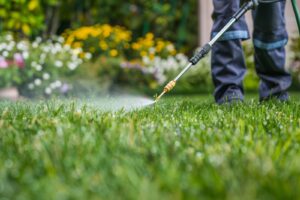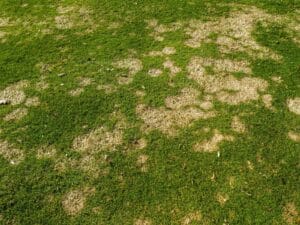Termites are a huge problem and have been found in forty-nine states, Utah included. Termites cause an estimated $5 billion in property damage annually. Learn what you need to know about termites in your home.
Termites in Homes
First, it’s vital to know that if termites have been nesting in your home, the damage caused is usually not covered by homeowner’s insurance. They also cost thousands of dollars in damage and cause health issues for your family. Once the signs are there, it’s often too late, so being proactive is the best way to prevent an infestation.
Let’s discuss the signs of termite infestation and ways to prevent it from happening.
Signs of Termites
There are typically five signs to watch for when checking for termites in your home. These include:
- Hollowed or damaged wood
Inspect below and behind surfaces for wood damage, including your walls, floors, or any other place with wood. If you see the damage, it could be caused by termites chewing through the wood, leaving behind long grooves, in search of cellulose. Over time, these grooves weaken the wood, thus creating structural damage. You’ll notice a honeycomb interior and a hollow or empty sound.
- Blisters in wood flooring
This means termites are feeding within or below, and subterranean termites (small, opaque insects that can break up wood or other cellulose from its source) can cause subfloor damage, thus making your wood flooring appear as it was water-damaged.
- Mud tubes
Where the ground meets your house, you’ll notice pencil-sized mud tubes, which are small tunnels located around termite nests. They’re also found in a tree or shed or other possible food source and require specific temperatures and humidity levels to survive. They create the tunnels to prevent cool, dry air from seeping in, effectively transforming your home into a place where they can thrive.
- Evidence of swarms
Near closed windows or other home-access points are perfect areas for discarded termite wings since they swarm out of their nest to mate and then find a place to start a new colony. Termites intentionally twist their wings off when they land because they’ll never need them again.
- Drywood termite dropping
Drywood termites nest inside of wood and create galleries while tunneling and eating the wood they’re infesting. They like to keep these galleries clean, so they create kick out holes that allow them to remove their excrement, which is wood. This creates pellets that resemble sawdust or coffee grounds.
Preventing Termites
Keep in mind that just because you don’t see them now doesn’t mean they’re not there. It’s essential to be proactive and look for these signs periodically and maintain a termite protection plan by a reputable company.
Also, eliminate or reduce moisture in and around your home, where termites tend to thrive. Repair any leaking faucets, water pipes, or exterior AC units, as well as rotted roof shingles, fascia, and soffits. Replace weather-stripping and any loose mortar around your basement foundations and windows. If you have firewood, store it at least 20 feet away from the house.
Call Summit Lawn & Pest Control
If in doubt, call us. We can get a pest control technician out to inspect your home for termites. We serve all of Utah County and can take care of pests, as well as your lawn. Reach out and call us today.






